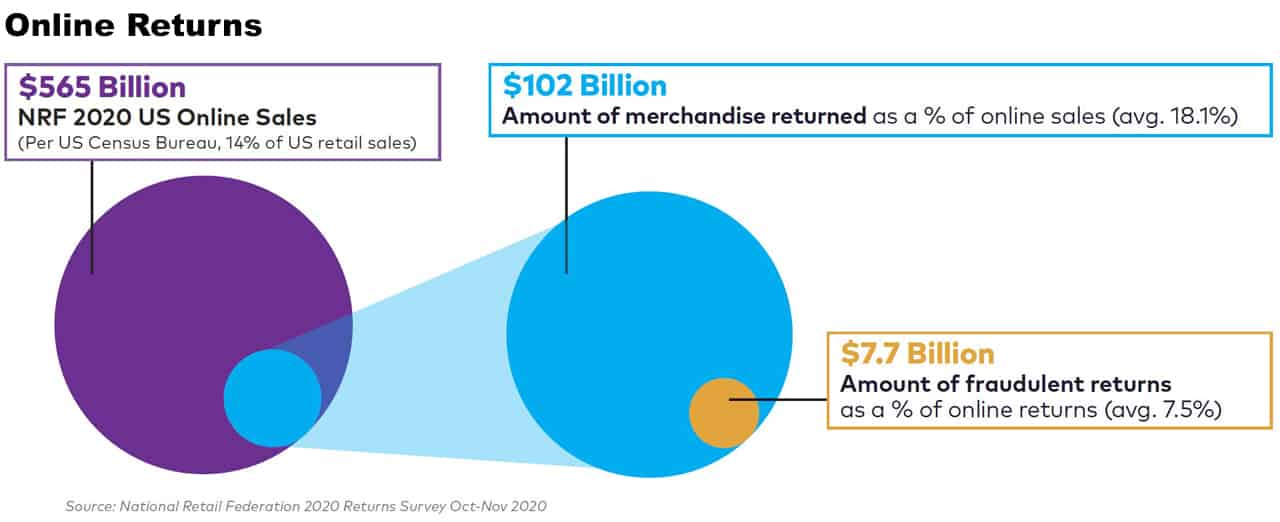Consumers returned an estimated $428 billion in merchandise to retailers last year, approximately 10.6 percent of total US retail sales in 2020. Of those returns, roughly 5.9 percent were fraudulent, equating to $25.3 billion, according to a report released by the National Retail Federation (NRF) and Appriss Retail.

“Last year, we saw an increase in returns of online purchases as the pandemic forced more consumers to shop online,” said Mark Mathews, NRF’s vice president of research development and industry analysis. “Retailers view the return process as an opportunity to further engage with customers, as it provides additional points of contact for retailers to enhance the overall consumer experience.”
While the total rate of returns is in line with recent years, online returns more than doubled in 2020 from 2019 and are a major driver of the overall growth of returns. In 2020, e-commerce accounted for $565 billion or 14 percent of total US retail sales. Approximately $102 billion of merchandise purchased online was returned, with $7.7 billion (7.5 percent) labeled as fraudulent.


“Returns, especially online returns, are up over last year, at the same time that retailers are struggling to find a balance between making returns as frictionless as possible and keeping costs in check,” said Steve Prebble, president of Appriss Retail. “While many types of returns can be risky for the retailer, there are ample rewards to be earned when consumers have a friendly interaction. We hope that the report invites further discussions about how retailers can improve their customer experience and optimize the profit potential of service-oriented options like ecommerce returns or buy-online-return-in-store (BORIS).”
The survey found that for every $1 billion in sales, the average retailer incurs $106 million in merchandise returns. Additionally, for every $100 in returned merchandise accepted, retailers lose $5.90 to return fraud. The top categories of merchandise returned include auto parts (19.4 percent), apparel (12.2 percent), home improvement (11.5 percent), and housewares (11.5 percent). More than one-fifth of returns were completed through credit cards, followed by cash (12.7 percent) and debit cards (7 percent).
NRF’s holiday forecast predicted a 3.6 percent to 5.2 percent growth over the 2019 holiday season to a total between $755.3 billion and $766.7 billion. On average, retailers expect 13.3 percent of merchandise sold during the 2020 holiday season to be returned. The estimated cost of these holiday returns is $101 billion. More than one-third of respondents indicated they planned to hire additional staff to handle returns over the holidays. The vast majority expect to see the bulk of returns during the month of January.
The survey of 62 retailers was conducted by NRF and Appriss Retail October 19 – November 2, 2020. Click here to view the survey results.


